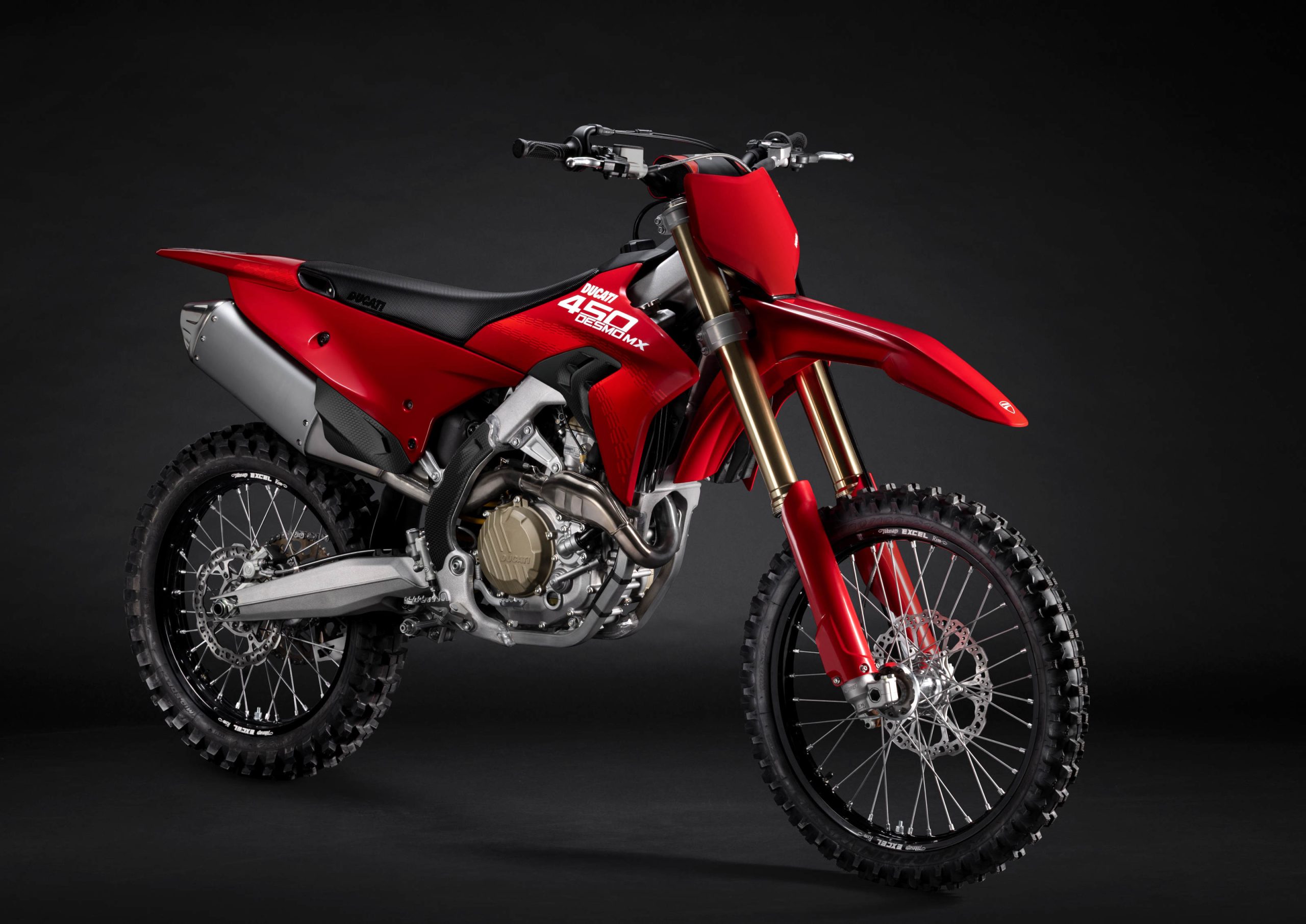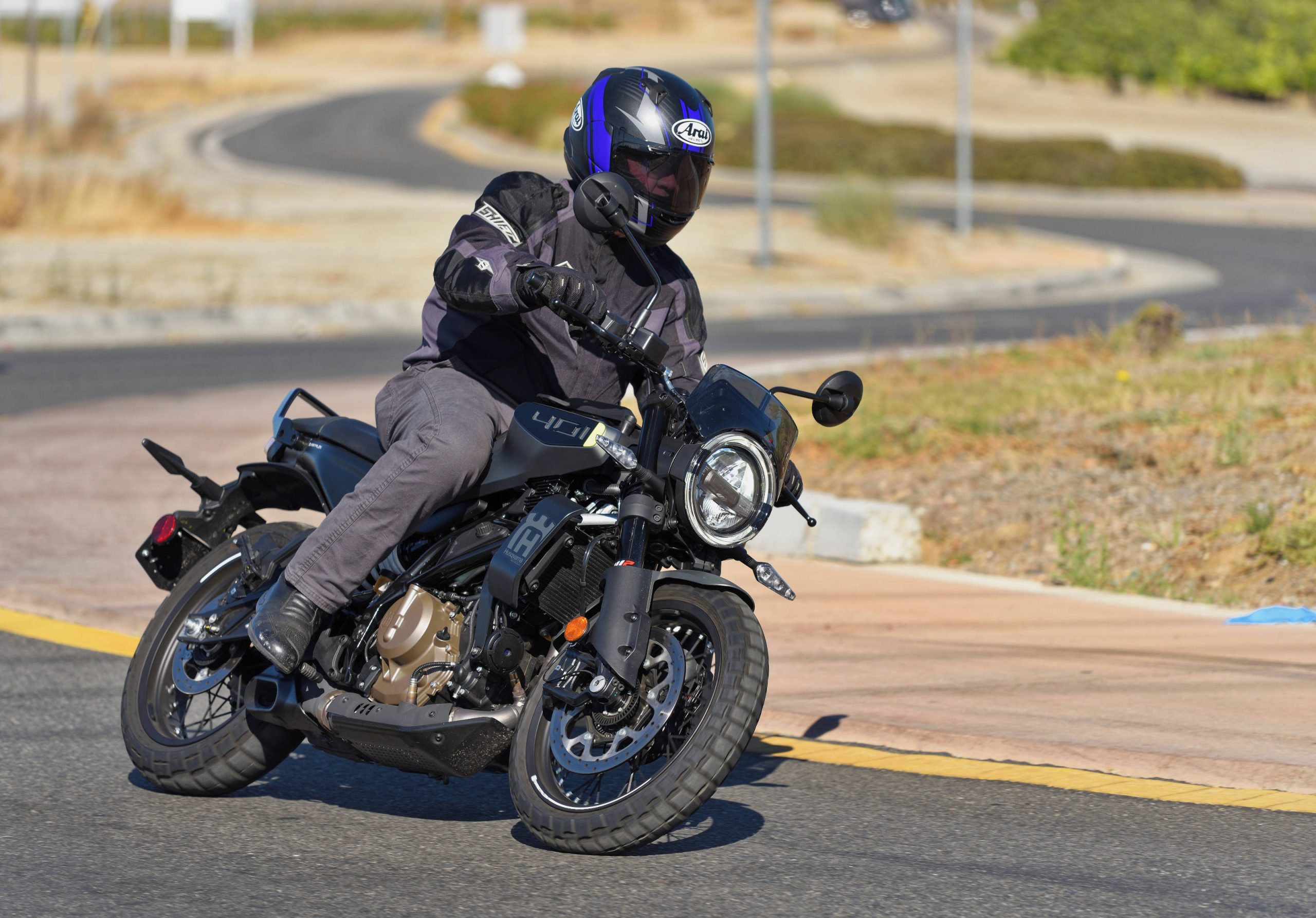
Last Saturday, I updated our readers with a quick teaser about my first ride on Star’s all-new 2007 V-Star 1300. At that point, I had just returned from the press intro in Asheville, North Carolina, and I was a tad jetlagged. After taking a few days to put my thoughts in order (and recover), I thought the time had come to share a more in-depth analysis of Star’s latest entry into the highly competitive middleweight cruiser class.
If you remember my first ride of Kawasaki’s 2006 Vulcan 900 Classic back in March, you know that I’m a big fan of middleweight cruisers. While their sheer size can give the rider a feeling of power and dominance, the bigger full-size (1600-2000cc) cruisers can quickly lose when weighing the “fun factor” against their smaller siblings when the road turns twisty. The middleweights are usually easier to ride, better handling, and of course easier on the wallet.
After posting my first ride impression of the Vulcan 900, I received a few reader emails claiming that I had left something out of my comparison – several readers who had a chance to ride the Vulcan 900 mentioned that Kawasaki’s water-cooled, SOHC, four-valve per cylinder motor was one of the strongest middleweights around, and in fact felt significantly stronger than most of the air-cooled, two-valve 1100cc motors in the class – including the old V-Star 1100. What we didn’t know at the time, however, was that Star had a new middleweight in developement that would bring class-leading power using the same design elements as Kawasaki’s new 900, but with even more displacement.
That middleweight is the all-new Star Motorcycles V-Star 1300.

The first thing you won’t notice about the new V-Star is that the completely new engine was built from the ground up as a water-cooled design. By tucking the radiator in between the split front downtubes (and painting it black), Star made the radiator almost invisible to the casual observer. The water houses are routed vertically rather than horizontally, with the ‘in’ hose coming up from between the cylinders, passing over the forward cylinder head (under the gas tank) and into the top of the radiator. The ‘out’ house exits the bottom of the radiator and heads back into the base of the engine, artfully concealed by the frame. Once it enters the motor, water is routed entirely through internal passages cast into the block, leaving no telltale external water lines to give away the engine’s water-cooled status. With the viewer’s eye captivated by the polished cooling fins on the cylinder heads, it is unlikely that anyone would suspect this bike is water-cooled, unless they had some prior knowledge of the engine’s configuration.
The modernized engine configuration has paid big dividends for the V-Star in terms of both power and torque. The 1300cc engine’s broad, useable range of power works with the bike’s light (for a full-size cruiser) weight to push the bike along nicely, pretty much regardless of engine rpm. I feel like I’ve been saying that a lot lately, which isn’t a bad thing – all the major manufacturers seem to have come to the same conclusion, namely that the best cruiser engines should provide a broad, seamless spread of power that allows the rider to summon up respectable roll-on acceleration any time, any place. The V-Star 1300 fits this description to a T. Strong low-end grunt builds quickly into an impressive mid-range surge, which starts to taper off as you reach the higher rpm. Short-shifting at the top of the mid-range is the best way to make quick progress, and a method that fits perfectly with the bike’s character.
Working hand-in-hand with the new engine is the remarkable new five-speed transmission, which is quite possibly my favorite feature on the bike. Star’s engineers spent a lot of time and effort selecting the perfect gear ratios for the new five-speed, and it shows when riding the bike. Taller gear ratios (as compared to the V-Star 1100) take advantage of the new motor’s greater torque to give a more relaxed feel, while still delivering ample acceleration for this type of bike. Fourth and fifth gear are as close to perfection as I can imagine – using fourth on back roads and highways in the 50-65mph range, and fifth on the freeway at speeds above 65mph, leaves the V-Star purring along smoothly and contentedly, while at the same time keeping plenty of power available to make passing easily accomplished just by rolling on the throttle – no need to downshift.
Star Motorcycles claim gains of 13hp and 18lb/ft of torque over the old 1100, and promise that the V-Star 1300 delivers “best in class” performance. This is hard to verify without a dyno, but after riding the bike for a full day, I’m inclined to believe them. The new motor offers performance that feels close to, if not the equal of, the 1500-1600cc machines that were for a long time the largest-displacement cruisers available. Of course, motors of 1800cc+ displacement are the norm in the latest big cruisers, but the point is that the V-Star 1300 maintains the weight and handling of a mid-size cruiser, while offering performance that matches that of the top-of-the-line full-size machines from a few short years ago. For the typical cruising rider, the V-Star 1300 offers all the power they’ll ever need, and does so in a friendly and highly flexible manner.

As with most modern Japanese cruisers, there is plenty of low-frequency vibration to remind the rider “HEY, this is a BIG V-Twin with BIG pistons!”, but no high-frequency vibes to speak of – not surprising, considering the twin balancers (one on each side of the motor). These vibration characteristics are a major target for modern cruiser designers/engineers, and Star achieved them with this bike.
The engine’s twin balance shafts smoothed things out enough that Star was able to use the engine as a stressed member of the chassis, rigidly mounting it in the new double cradle steel frame. This greatly improves the rigidity of the new chassis, and gives the bike a much more ‘solid’ feel over bumps and other road irregularities. 41mm KYB forks handle the damping duties up front, while at the rear a “link-type rear shock” keeps the wheel and swingarm under control.

Overall handling is excellent for a bike in this class, with a confidence-inspiring front end and a relatively nimble feel. The wide bars make it easy to initiate a turn, and the V-Star generally holds its line confidently once leaned over – though like most cruisers, lean angle is limited by a lack of ground clearance. Nevertheless, the V-Star 1300 is capable of maintaining a reasonably aggressive pace through the corners.
The suspension, both front and rear, does its work adequatly but without distinguishing itself in any particular area. However, despite the more rigid chassis and upgraded suspension components, mid-corner bumps can still upset the chassis, especially sharp-edged ridges in the pavement. While irritating, this isn’t a serious problem, as the 1300 typically recovers quickly and confidently. At one point in the ride, I hit some mid-corner debris while turning pretty quickly, and the bike slid both wheels (the front particularly), but I was able to gather up the slide (with help from an MX-style foot dab) and continue on my way with little drama – a statement that exemplifies the ‘natural’ feel of the V-Star 1300’s chassis.
The ergonomics are typical cruiser fare – the floorboards have a relationship with the seat that puts an average-sized rider like me (5’9″) in a comfortable, chair-like seating position. They’re well within reach for shorter riders as well, although I suspect that anyone significantly taller than six feet might find their knees being elevated nearly to arm level. The wide, backward-curving bars were a bit too far away, which resulted in a slightly hunched-forward position that made my shoulders and upper back ache after a few hours of riding. Loosening the clamps and rotating the bars back a few degrees alleviated this problem, without any apparent detrimental effect on rider control or handling. The seat is reasonably comfortable, and flat from front to back to allow the rider to move fore and aft to suit his size. Shorter riders will probably find themselves sitting more towards the front of the seat, where its narrower width allows the rider’s feet to touch the ground more easily. Once on the move, however, scooting back a few inches puts you up against the small upward curve at the rear of the seat, which provides some support for the lower back – although not as much as some cruisers with deeper (downward-curved) saddles. I would rate the stock seat as average or just slightly below average as far as comfort, and if I were to buy a V-Star 1300 I would definitely look into the uprated seat offered by Star’s accessory division.
One interesting feature on the V-Star 1300 is the removable/replaceable primary and secondary floorboard feelers. If you ride cruisers like I ride cruisers, it wouldn’t be too long until your floorboards had degenerated into a jagged, ground-down piece of metal about half the size of the original pieces. No fun. To avoid this, the V-Star’s floorboards are equipped with feelers (probably described more accurately as ‘sliders’) that can be replaced once they are nearly worn through. A good idea, and one that shows this bike’s designers obviously had aggressive riding in mind when they started filling in their clean sheets of paper.
The dual four-piston front calipers clamping twin 298mm discs provide surprisingly good braking power for the class, and although the initial bite is somewhat soft, a good squeeze on the lever will haul the 1300 down from speed quickly. Another 298mm disc is found at the rear, this one clamped by a single-piston caliper that does its work with little drama, although requires heavy pedal pressure to access its full stopping power.

All the comments I made here are applicable to both the standard V-Star 1300 and the Touring model. The Touring model’s windscreen certainly provides much-improved wind protection, although I did experience a small amount of helmet buffeting above 60mph. However, the standard bike didn’t feel lacking in comfort at freeway speeds, and I didn’t find myself missing the fairing much; perhaps due to the low seat height or something to do with the riding position, the standard bike didn’t force the rider to suffer as much wind blast as most unfaired cruisers, nor did I feel like a windsail above 60mph. As long as you stay under 80mph, you might not miss the fairing, although the Touring model does have the advantage of the leather-covered hard saddlebags for storage.
According to the market research Star representatives shared with us before our ride, the V-Star 1300’s target market will primarily use their cruiser for relaxed riding on twisty backroads, with freeway/interstate riding coming in a close second. The new 1300 excels in both these roles, offering light and nimble handling relative to other cruisers, along with significantly more power than the old 1100 it replaces. As an added benefit, Star already has quite a few accessories available for the new bike, and is in the process of developing more, which will allow buyers to personalize their V-Star and improve its function for the type of riding they plan to do.
The V-Star 1300 will carry a US MSRP of $10,090, while the Touring model will be priced between $11,190-$11,390 depending on paint scheme (single color or two-tone). Both bikes should be available at your local Star Motorcycles dealership by the time you read this. For more information, check out starmotorcycles.com.






